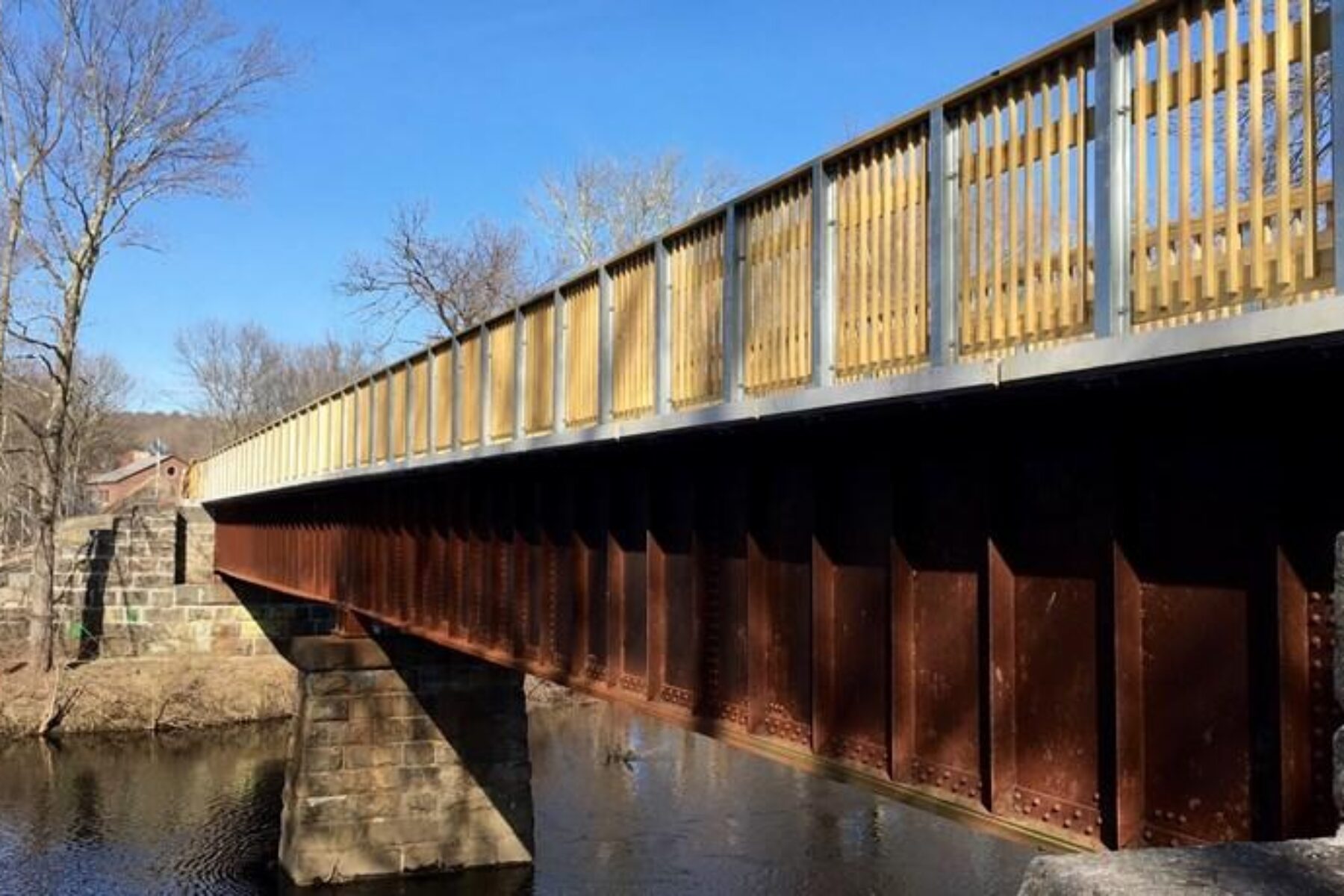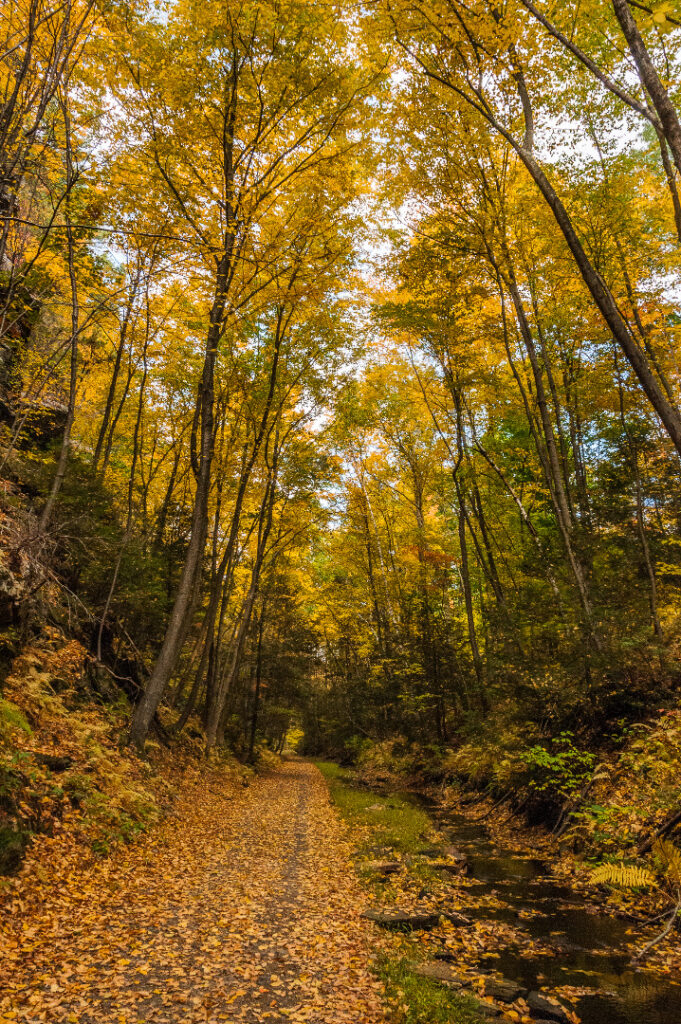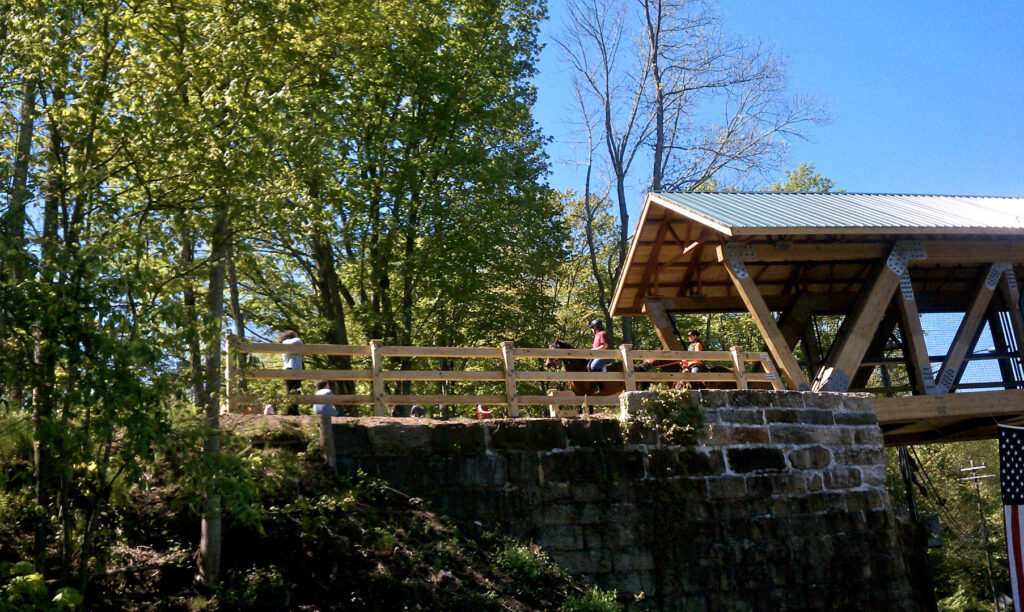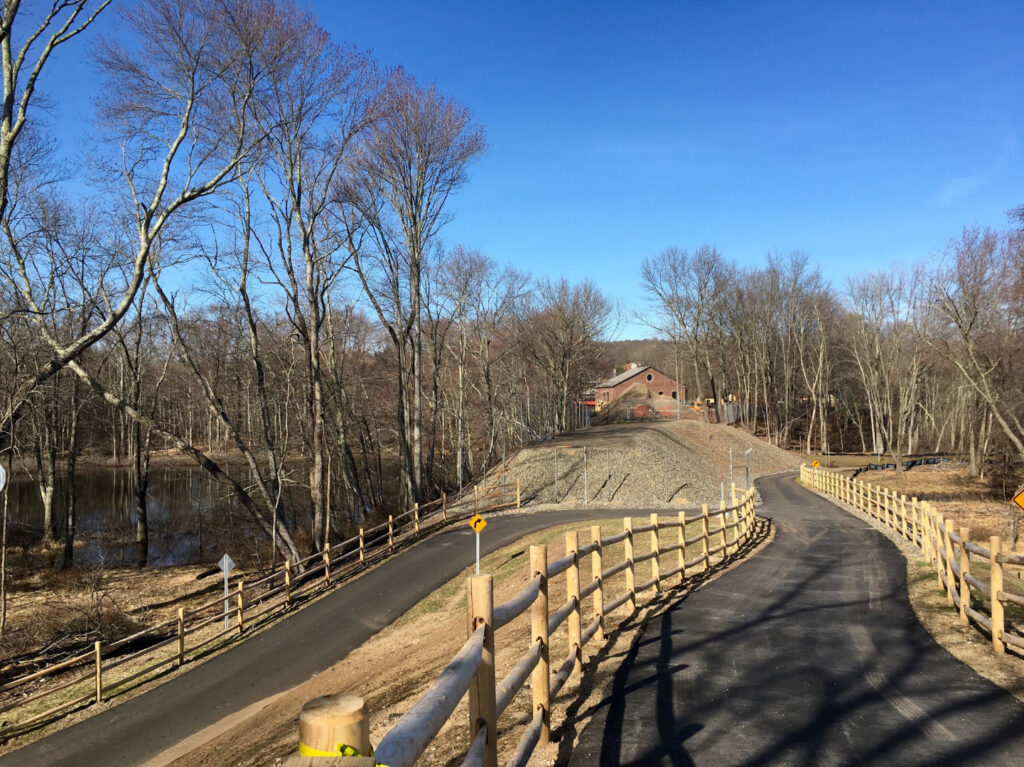Connecticut’s Hop River State Park Trail

Trail of the Month: January 2017
“This has been a great place for a kid to grow up.”
It’s hard to pick a favorite season to experience the Hop River State Park Trail, set amidst the dense forests of Eastern Connecticut. Sections of the 20-mile rail-trail dive through steep rock cuts that seep moisture, giving the feeling of air conditioning in summer and freezing into glistening ice falls in winter. Maples and oaks bring fiery autumn hues and, in the spring, trilliums and other wildflowers speckle the brush with color. Add three tunnels and a covered bridge and the trail’s picturesque backdrop is complete.

“It’s beautiful the way the trees arch over the top of the trail and touch,” says Gwen Marrion, president of Bolton Land Trust. “It used to be that the trees were cut because the trains were coal-fired and the coal could pop out and light the woods on fire, so the railroad company would trim the trees way back. Now the trees have grown in closer and have arched over.”
Beginning in Vernon, just east of the state capital of Hartford, the crushed-stone trail traces the route of a 19th-century railroad to Windham, emerging from the trees to cross half a dozen charming New England towns along the way. Some, like Manchester and Coventry, have roots dating back to the colonial settlements of the late 1600s and early 1700s. In the latter, you can visit the homestead of Nathan Hale, the American hero in the Revolutionary War who famously said, “I only regret that I have but one life to lose for my country.”
Those interested in Revolutionary War history should also check out the preserved campsite of Jean-Baptiste de Rochambeau, who commanded French troops under George Washington’s leadership, marching through an area adjacent to the present-day trail.
While the tie to history is tangible on the Hop River Trail, its future as part of the larger—much larger—East Coast Greenway (ECG) is just as vivid. Within Connecticut’s borders lies 200 miles of this planned route of connected multi-use trails that will continue north to Maine’s border with Canada and south to the tip of Florida.
“In 2012, the Department of Transportation, through Commissioner James Redeker, began shifting resources towards completing trail gaps in the state,” says Hugh Hayward, an engineer at the state’s DOT. “A lot of pre-existing developments had been made by municipalities, which worked well for a period of time, but there were trail gaps that were difficult or too costly for them to build.”
In addition to local governments building trails through their communities, grassroots volunteer groups have assisted with the ongoing maintenance and promotion of these trails for years. Don Bellingham, founder of one such group called the Vernon Greenways Volunteers, estimates that his organization distributes 7,500 trail maps a year for the Hop River Trail. And, when the group’s crews are out doing work on the trail, they are always greeted with friendly waves and thank yous from passersby.

To support these efforts at the state level, a five-year plan to invest $10 million a year for significant trail projects, such as filling in gaps in the state’s ECG route, was initiated by Governor Dannel Malloy in 2015. Currently, 43 percent of the greenway in Connecticut is complete, and new connections to trails at either end of the Hop River Trail will make it possible to travel by trail from Hartford to the state’s border with Rhode Island in the not too distant future.
Just this past May, a literal and figurative bridge opened between the Hop River Trail and the Air Line State Park Trail, both among the longest rail-trails in Connecticut, solidifying a key link in the regional network. In addition to refurbishing a former railroad bridge, the project also brought new access to the river with the addition of a canoe and kayak launch at the waterfront.

“We saw a lot of local support for the new Willimantic River bridge,” says Laurie Giannotti, the trails and greenways coordinator for the state’s Department of Energy and Environmental Protection. “It was the most-attended public event that I’ve seen in the 15 years that I’ve been part of this program.”
On the Hop River Trail’s west end, a connection to the Charter Oak Greenway is also underway.
“The Charter Oak Greenway gap is under construction now,” says Marrion. “That’s slated to start this year and will take about a year. In 2018, we hope this gap will be closed and open up so many opportunities.”
Although the importance of these trails has been strongly felt by locals for decades, the Connecticut Trail Census, launched in 2016, will add some hard numbers to subjective measures of success. Laser counters have been placed on more than a dozen trails statewide, including the Hop River Trail, and surveys of trail users will also be utilized to learn more about why and how people use these trails. In tandem, DEEP and DOT also launched the “CT Rail Trail Explorer” in 2016 to provide an online resource for connecting more people with these valuable assets.
Trails are the reason Bellingham moved to the Vernon area. He’s spent countless hours over the years hiking the woods with his now-grown son and, because of the extensive trail system here, he says, “This has been a great place for a kid to grow up.”

Donate
Everyone deserves access to safe ways to walk, bike, and be active outdoors.
